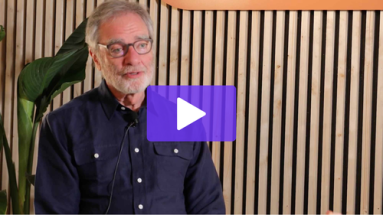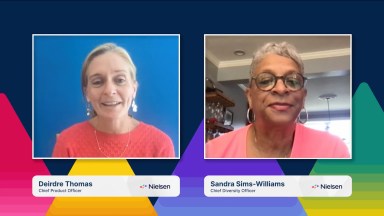 In about four months, we’ll have officially made it to “the future”—at least according to the time-stamp on Doc Brown’s DeLorean in the “Back to the Future” movie series.
In about four months, we’ll have officially made it to “the future”—at least according to the time-stamp on Doc Brown’s DeLorean in the “Back to the Future” movie series.
At Nielsen’s U.S. Consumer 360 conference, we asked a panel of media industry experts to look ahead even further and answer the question: “What do you predict will change by 2020, and what will companies need to do to continue to thrive in that environment?”
The panel included Brian Hughes, SVP of audience analysis at Magna Global, Reny Diaz, VP of insights and strategy at NBCU, Damian Garbaccio, chief strategy officer at eXelate, a Nielsen company, and Eric Solomon, SVP of product leadership at Nielsen.
I had the opportunity to moderate the discussion and thought I would share a few takeaways.
1. Consumers will become even more diverse—both in demographics and behavior—challenging traditional ways to categorize them.
NBCU’s Diaz predicted that by 2020, more than one in five marriages will be mixed race—a striking indication of how the current crop of Millennials will confound simple classification. Magna’s Hughes pointed out that while marketers like to use labels such as “Hispanics” when creating segmentations, it’s more complicated than that; he cited findings from their upcoming Media Economy Report that first-, second-, and third-generation Hispanics all exhibited significant differences in media consumption. More generally, consumers across the demographic spectrum have embraced the multitude of options for watching, listening, reading and buying that digitally connected devices offer them. The panel’s consensus advice to prepare for 2020: invest in a robust consumer insights effort to ensure you have a strong handle on who your customers are and what they want from you.
2. Owning and activating consumer data effectively will be a core competency for all marketers and media companies.
“By 2020,” said eXelate’s Garbaccio, “more than 75% of marketers and media companies will be using a Data Management Platform (DMP) to activate data–their own and that of third parties.” Data ownership was a hot topic in the discussion, as it has been within the media industry over the past 12 months: to what degree should consumer data live with marketers versus the media properties and social networks that aggregate audiences for them versus their agencies? Garbaccio cited the desire to develop and leverage proprietary first-party data as the top priority listed by his marketer clients. With players around the industry collecting different fragments of data about what consumers are watching and buying, Magna’s Hughes declared that “finding ways to partner” would be a better course for marketers to take.
3. Traditional media and ad markets will continue to look more like and meld with digital markets, but significant investment will be needed to complete the transformation.
Nielsen’s Solomon predicted that more than 50% of TV advertising will be transacted on audience measures beyond age and gender, a view the rest of the group supported. NBCU’s Diaz noted that some of today’s most successful content underscores a trend towards cultural pluralism, where no one group is dominant in the new American mainstream. Content and consumer products alike will need to reflect and celebrate this plurality to grow over the next five years. eXelate’s Garbaccio pointed out the effort TV networks made at this year’s Upfronts to highlight their shows’ ability to reach specific buyers (e.g., purchasers of a particular cereal brand) using data from Nielsen and other providers. The panel was also unanimous in believing that “programmatic” (i.e., automated) buying would eventually be the dominant process for TV advertising transactions. However, the panelists cited significant infrastructure upgrades as a major stumbling block for both targeted advertising and programmatic buying for linear TV and expressed skepticism that it would be in place at scale by 2020.
4. Consumer needs dictate what will and won’t change – and not everything will change.
Given that we’ve witnessed dramatic, accelerating change over the past five years–the advent of tablets, the explosive growth in mobile device usage, the emergence of Netflix, advances in digital advertising–what does NOT change over the next five years might be just as surprising as what does. For example, Magna’s Hughes believes that the uptake of unbundled TV packages will be significantly lower than the popular press suggests. Hughes’ analysis shows that consumers still want to have a selection of channels and still need access to high-speed internet, both of which cable system operators can provide through a single subscription. Nielsen’s Solomon concurred, identifying a realization many consumers are coming to: assembling a set of subscription programming and streaming offerings is tantamount to creating your own cable package – not necessarily at a lower price point.
Overall, “Thriving in 2020” offered a lively discussion and an enjoyable 60 minutes of prognostication and debate. And Magna’s Hughes provided the session’s only prediction we can really be certain of: “By 2020, I’ll be on a panel talking about what it takes to thrive in 2025.”



